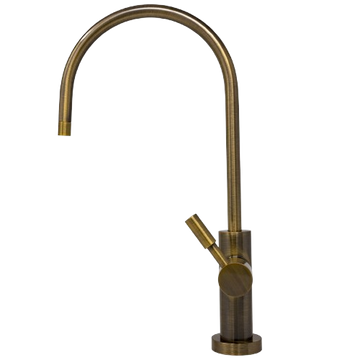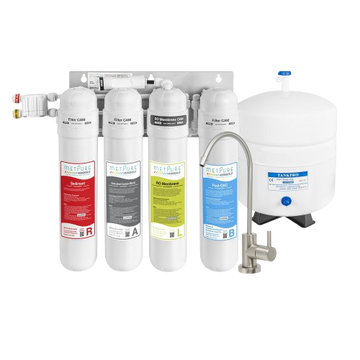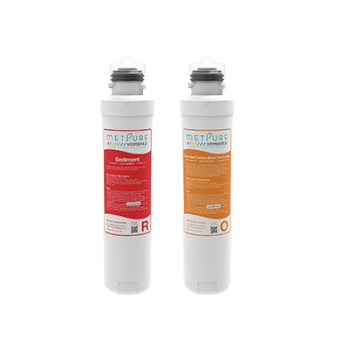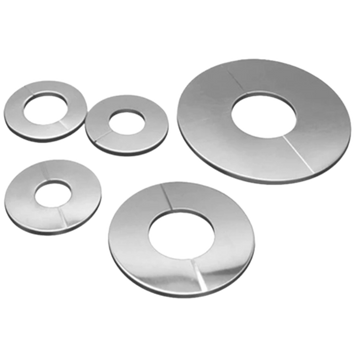Reverse Osmosis Water Filtration uses a semi-permeable membrane to separate contaminants from pure water. It removes 99% of dissolved salts, particles and ions from water, as well as bacteria and pyrogens. It also reduces lead, PFAS chemicals, disinfection byproducts, volatile organic compounds and more.
A reverse osmosis system usually has additional stages of filtration to address other contaminants that the RO membrane cannot handle. These stages may include carbon filtration and sediment filtration.
What is Reverse Osmosis?
Reverse osmosis (RO) is an advanced water filtration process that gets rid of pollutants down to the molecular level. This can include dissolved salts like sodium, calcium, and magnesium, chemicals such as chlorine and fluoride, herbicides and pesticides, biological contaminants such as bacteria and viruses, and particulate matter such as sediment and silt.
The RO process uses a semipermeable membrane to separate the pure solvent from the impurities. The solute molecules stay on the concentrated side of the membrane, while the pure water molecules move to the less-concentrated side. This is done by applying pressure, which overcomes osmotic forces that usually favor even distributions.
The result is clean, safe water for drinking and household use. This is often preferred to tap or bottled water, especially in homes with young children who may be more susceptible to the harmful effects of certain contaminants in their drinking water. Ask your water expert about the benefits of a comprehensive reverse osmosis system in your home during a free, in-home water test and consultation.
How Does Reverse Osmosis Work?
Using the natural phenomenon of osmosis, reverse osmosis pushes water molecules from the side with high concentration to the side with lower concentration. This naturally-occurring process is accelerated by applying pressure to the salt water side of the membrane.
This creates a strong barrier that separates the clean water on one side from the contaminants on the other. With most unwanted chemicals and contaminants trapped on the other side of the membrane, you can enjoy a virtually unlimited supply of filtered water from your kitchen sink.
The reverse osmosis system can also be used to pre-treat well water before it enters your home for a more complete filtration of your entire household’s drinking water. This can be an excellent option for those living in a hard water area where dissolved iron is a concern. The water can then be further treated with a UV sterilization component for added microbial protection. This prevents any bacterial growth from getting into the drinking water.
What Are the Contaminants Removed by Reverse Osmosis?
The pore size of the RO membrane makes it efficient for sieving out a wide range of dissolved and suspended contaminants. For example, it can remove the parasites Cryptosporidium and Giardia, which are responsible for many stomach infections. It can also remove bacteria, such as Salmonella and E coli, and organic matter like dissolved minerals.
Reverse osmosis is also effective for eliminating chloride and fluoride, two very common contaminants found in drinking water. These toxins can ruin your gut microbiome and mess with your thyroid, respectively.
However, no single treatment method manages to eliminate all contaminants. For that reason, a reverse osmosis system is often used in conjunction with other treatment methods. A carbon filter is commonly included in household RO systems to help reduce chlorine and other disinfection byproducts, and sediment filters are used for removing silt particles that can foul the RO membrane. An expert can discuss your home’s water test results to recommend a specific treatment solution based on your unique needs.
How Much Water is Removed by Reverse Osmosis?
The reverse osmosis system removes both large particles and contaminants from drinking water down to a molecular level. It can remove dissolved salts (such as sodium, potassium, calcium, and magnesium), ions, and chemicals like chlorine and chloramines, fluoride, pesticides and herbicides, volatile organic compounds, heavy metals, and microorganisms.
Reverse osmosis operates on the principles of osmosis, which is when the concentration of an aqueous solution increases the molecules will move to the higher concentration solution. This happens through a semipermeable membrane.
Using reverse osmosis technology, you can reduce the amount of water that is wasted through this process. It’s a great way to make the most of the clean drinking water that is available to you! This makes it an eco-friendly choice, reducing the demand for bottled water and reducing plastic waste.














